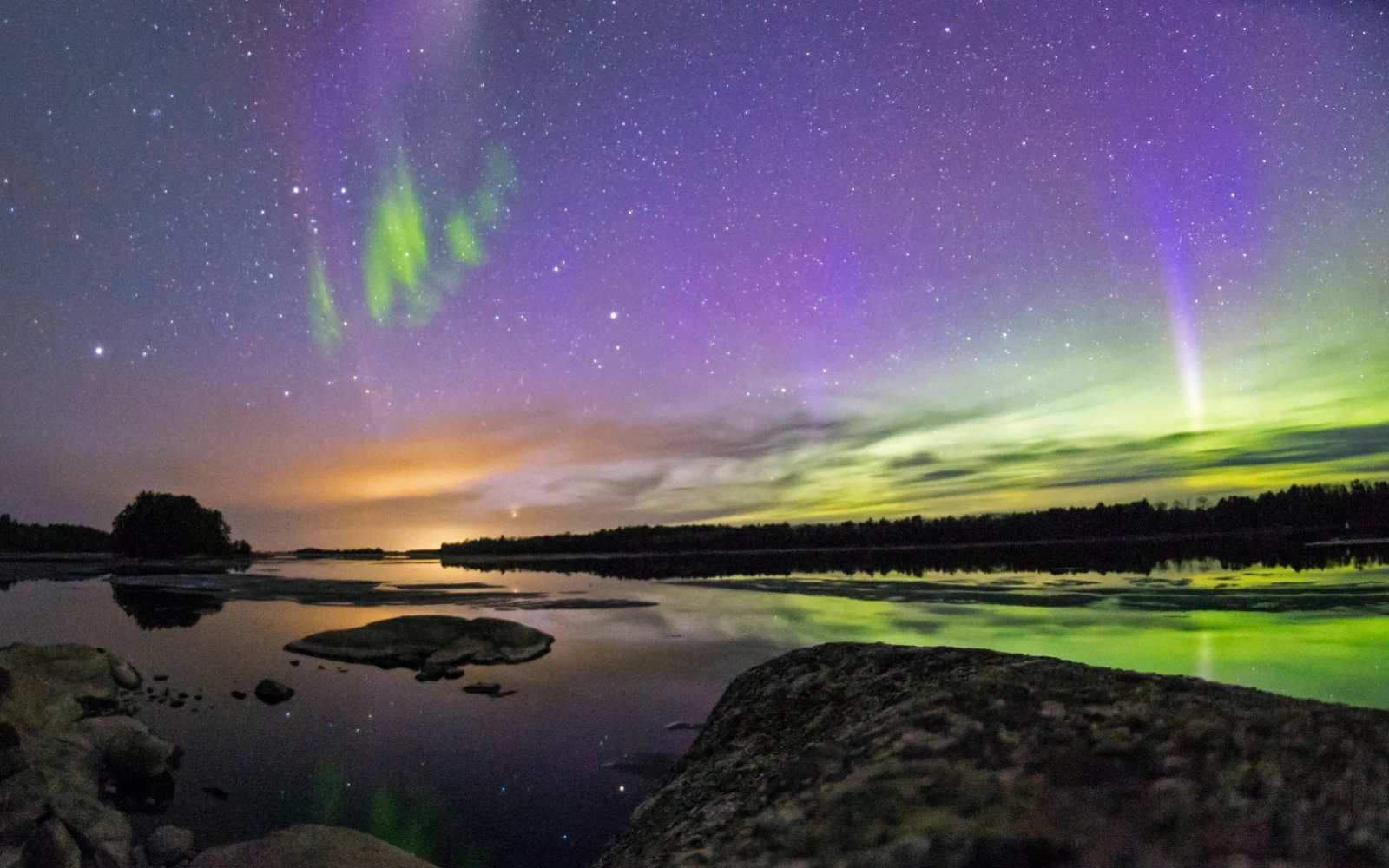What's the best time to visit Voyageurs National Park?
The best time to visit Voyageurs National Park is in the fall, with its tranquil environment, vibrant foliage, and ideal conditions for outdoor activities like hiking, fishing, and canoeing. September offers pleasant average temperatures around 57°F, while October cools down to an average of 43°F.
By November, the average temperature further drops to around 29°F, with rain and snow becoming more common, so planning accordingly for these conditions is important.
Voyageurs National Park in Minnesota is well-known for its stunning lakes, vibrant forests, stargazing opportunities, and a myriad of outdoor activities. In turn, taking a trip to the park is a great idea, regardless of the season.
However, while the park is open all year round, it’s still good to do a bit of research and see what the best time to visit Voyageurs National Park is. Apart from that, we’ll also share other tips and tricks to ensure you make the most out of your adventure!
The Best Time to Visit Voyageurs National Park

Danita Delimont/Shutterstock
The best time to visit Voyageurs National Park is in the fall. It’s hands down the prime season to visit the park.
The summer hustle and bustle is long gone, kids are back to school, mosquitos are more or less dormant, and the park’s trails flash their vibrant orange, yellow, and red colors.
The lakes are still, perfect for sunrise lovers or sunset chasers who wish to see the sun’s reflection on the calm waters. If you’re lucky enough, you’ll catch the Northern Lights flirting with the sleepy waters.
The fall season is also the best time to hit the trails, cast your fishing line, engage in wildlife watching, or paddle in a canoe, to name a few. Keep in mind that fall is a short season in this US area, so the crisp temperatures turn cold in the wink of an eye.
This means that in late September or early October, paddlers should be mindful of the cold water temperature. In September, on average, the maximum temperature is 66°F and the minimum 48°F.
There are approximately 18 dry days and eight hours of sunshine per day. October sees temperatures fluctuating between 49°F and 37°F.
Note that park buoys are taken off in early October, which makes lake navigation a daunting task. In November, the temperatures range between 34°F and 24°F. Apart from some rain, snow is also common.
Cheapest Time to Visit Voyageurs National Park
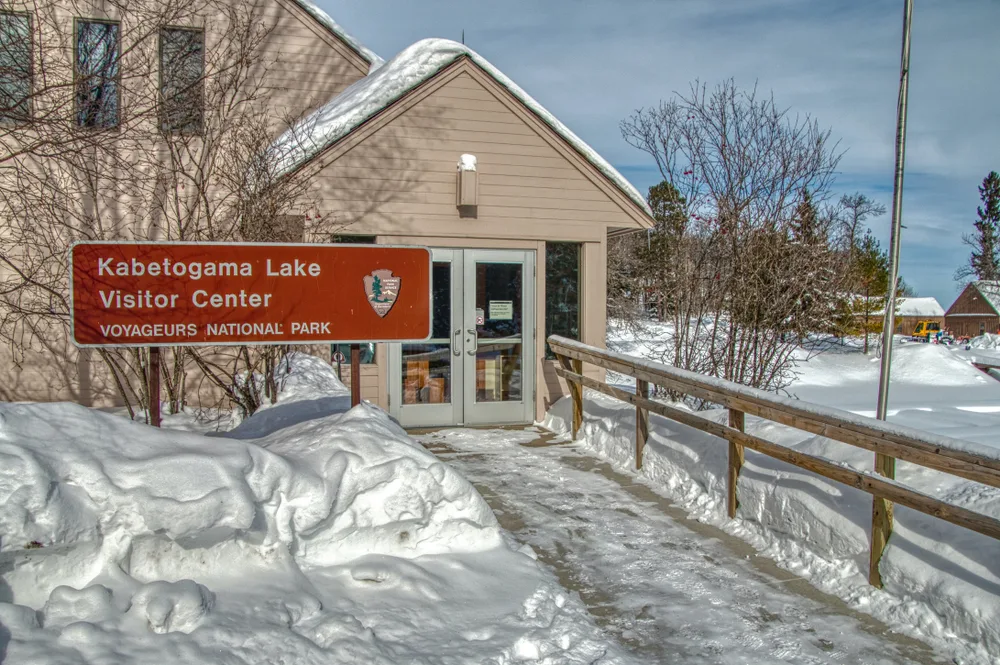
International Falls, Minnesota, USA 1-3-19 Voyageurs National Park in Northern Minnesota during Winter/Jacob Boomsma/Shutterstock
The cheapest time to visit Voyageurs National Park is from December to February, which provides travelers with affordable airfare prices and attractive lodging options.
For starters, it’s good to consider the most affordable time to visit Minnesota in general. Budget-minded folks should note that going to Minnesota is the cheapest during the travel slump after all the winter holidays.
Of course, whether you can benefit from this or not ultimately depends on how far your country of origin is. Either way, the post-holiday period seems to be great for price-aware travelers.
There’s a catch, though, and we’re going to be straightforward with you: winters here can be mind-bogglingly cold. Winter not only arrives early in Voyageurs National Park, but it also stays late.
In December, expect temperatures that fluctuate between 19°F and 8°F. Wind chills may unfortunately make these temperatures feel way colder at times. There are around three rainy days in the month, but approximately 20 of them are filled with snow.
January travelers should prepare for temperatures ranging between -1°F and 14°F. Being hands down the coldest month in the park, January sees two hours of sunshine a day on average. Use them wisely.
February sees a maximum temperature of 18°F and a minimum of 3°F. Going in winter may be the cheapest time to visit the Voyageurs National Park, but if you live in warmer climates, purchasing winter gear may be somewhat expensive!
Those brave enough to face the harsh Minnesotan winter wonderland can enjoy snowmobiling, snowshoeing, ice-fishing on some of the frozen lakes, as well as cross-country skiing. It’s likely that you’ll catch the northern lights, too — consider this a bonus for enduring the brass monkey weather.
All in all, very few travelers opt for a winter adventure in the Voyageurs National Park, however, those who do so are welcomed with unsurpassable views and calming winter solitude.
Least Busy Time to Visit Voyageurs National Park
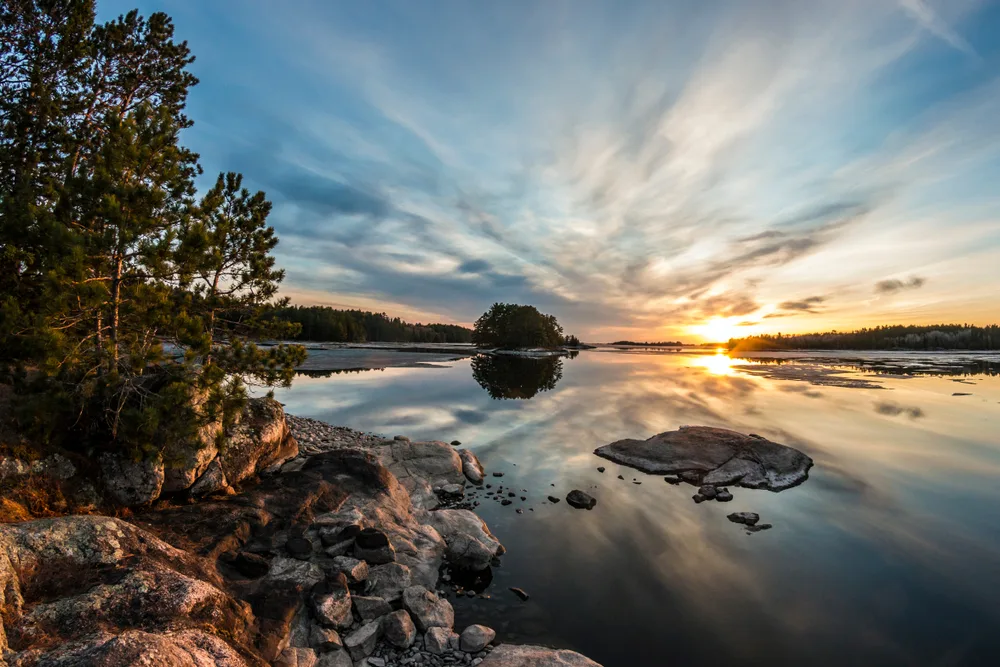
BlueBarronPhoto/Shutterstock
The least busy time to visit the Voyageurs National Park is in spring. The park is slowly transforming from a winter idyll into a spring haven.
Leaves and blooms start popping up on the winter-bare trees; animals that have been out of sight begin to reemerge; birds prepare for their homecoming.
The snow starts melting, and the park trails are almost fully visible again (expect a bit of mud, though). Park guests replace comfy snowmobiles with cool motorboats.
That said, keep in mind that spring weather in the park is highly unpredictable. For example, warm temperatures are fairly common in May, but witnessing harsh winter storms followed by random snowfalls isn’t unheard of either.
Also, as the temperatures increase and lakes slowly start thawing, it may be unsafe to embark on an ice adventure during that period. Make sure to check the weather before you decide to visit.
It’s worth noting that apart from these few pieces of cautionary information, the weather in spring is great for hiking, wildlife watching, and building campfires.
And the best part is that you get to enjoy these activities in solitude — spring sees fewer park visitors, as most await summer and warmer temperatures. The season is suitable for boating and fishing too.
In March, you can expect temperatures to fluctuate between 32°F and 18°F, alongside 17 snowy days. April welcomes guests with temperatures between 45°F and 30°F.
The number of rainy and snowy days is more or less the same: around ten or eleven. May temperatures vary between 63°F and 42°F. It’s sunny for around nine hours per day.
Worst Time to Visit Voyageurs National Park
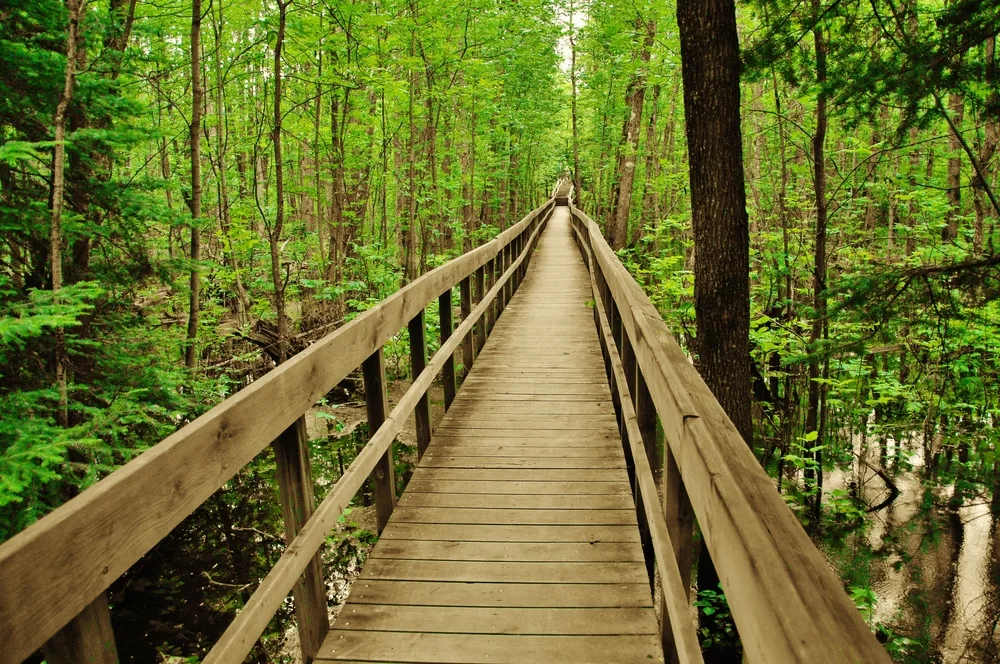
Life Atlas Photography/Shutterstock
Overall, the worst time to visit Voyageurs National park is in the summer. Biting flies are everywhere, ticks inhabit areas with dense vegetation, and mosquitoes “take advantage” of travelers looking forward to pleasant temperatures and recreational outdoor activities.
And while a bug-free adventure is only wishful thinking, other outdoor experiences are quite enticing in the summer period. From fishing, canoeing, and kayaking to observing eagles soaring in the sky (keep your binoculars within reach!), swimming, and hiking, the park is abundant with playful opportunities.
In June, on average, the temperatures vary between 71°F and 51°F. There are sixteen rainy days and nine hours of sunshine. July travelers should prepare for a maximum temperature of 77°F and a minimum of 57°F, as well as 17 dry days.
This month sees nine hours of sunshine on a daily basis. Lastly, the August temperatures range between 76°F and 55°F. There are 19 dry days and ten hours of sunlight. Enjoy them!
As a result of these warm temperatures and daylight stretching longer during these months, summer days tend to be the busiest at the park. This means people-packed lakes, crowded trails, and noisy nature.
As we said, going in summer isn’t the best decision, although we understand that summer weather is more than tempting.
Finally, the ace up our sleeve to convince you NOT to visit in summer (and go in fall instead) is letting you know you have the smallest chances of seeing the remarkable northern lights in summer.
So, What’s the Best Time to Visit Voyageurs National Park?
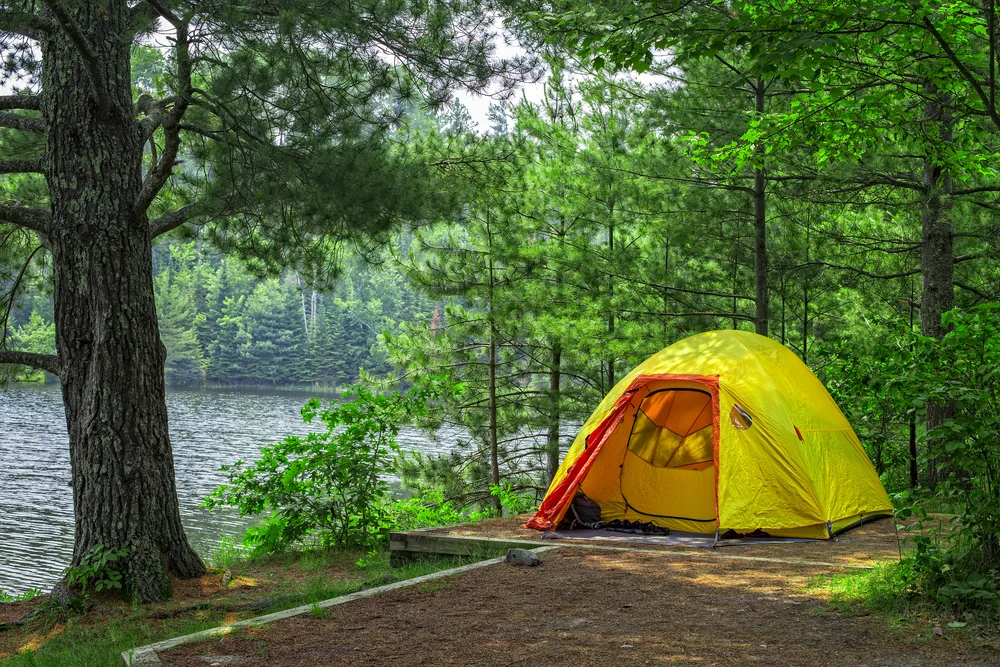
Steven Schremp/Shutterstock
First and foremost, the best time to visit the park is in the fall — between late September or early October. There are no irritating insects, the colors are as lively (and lovely!) as they can be, and the weather is more or less pleasant.
On the whole, the Voyageurs National Park has four distinct seasons, each with its beauty and possible challenges. Happy travels!



